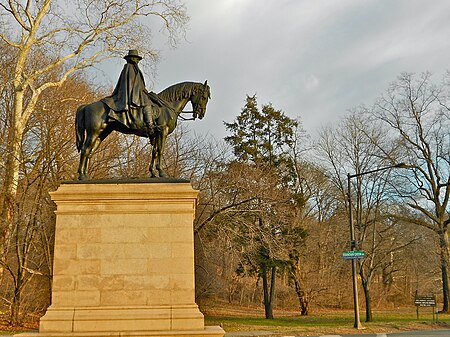Equestrian statue of Ulysses S. Grant
1899 establishments in Pennsylvania1899 sculpturesBronze sculptures in PennsylvaniaCultural depictions of Ulysses S. GrantCulture of Philadelphia ... and 10 more
Equestrian statues in PennsylvaniaFairmount ParkMonuments and memorials in PhiladelphiaOutdoor sculptures in PhiladelphiaSculptures by Daniel Chester FrenchSculptures of men in PennsylvaniaStatues of presidents of the United StatesUnion (American Civil War) monuments and memorials in PennsylvaniaUse American English from January 2021Use mdy dates from January 2021

The equestrian statue of Ulysses S. Grant is a public monument in Philadelphia, Pennsylvania, United States. Located in Fairmount Park, the monument honors Ulysses S. Grant, who served as a general in the Union Army during the American Civil War and later as President of the United States. The monument was designed by Daniel Chester French and Edward Clark Potter and consists of an equestrian statue atop a pedestal. The statue was dedicated in 1899.
Excerpt from the Wikipedia article Equestrian statue of Ulysses S. Grant (License: CC BY-SA 3.0, Authors, Images).Equestrian statue of Ulysses S. Grant
Fountain Green Drive, Philadelphia
Geographical coordinates (GPS) Address Nearby Places Show on map
Geographical coordinates (GPS)
| Latitude | Longitude |
|---|---|
| N 39.980833333333 ° | E -75.197777777778 ° |
Address
Fountain Green Drive
Fountain Green Drive
19104 Philadelphia
Pennsylvania, United States
Open on Google Maps











